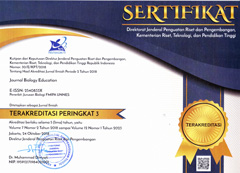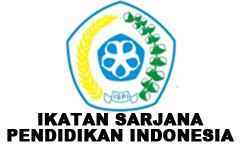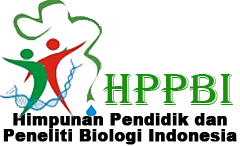The Activity and Student Learning Result in the Study of Environment Alteration Subject Using Problem Based Learning Model
Abstract
Basic of competence 3.11 analyzes data on environmental change, causes, and changes in environmental change for life. Basic competence 4.11. PBL model is suitable to be applied to environmental change learning material. PBL is problem-oriented. So it's good for solving lessons, challenging abilities and increasing student activity. The purpose of this study is to analyze activities, learning outcomes, attitudes, and understand the thinking of learning outcomes with student activities. This type of research is a quasi-experimental research design with non-aquivalent control groups. The population of this research is students of class X IPA 1 and 2 MA Al Asror Semarang. The independent variables contain learning material about the environment using PBL, while the variables are discussed further, learning outcomes, and student attitudes. PBL which plays a role in student activity seen in the Mann Whitney test results with Asymp. Sig. (2-tailed) 0,000 <0.05 indicates Ha received, which means all activities between the experimental class and the control class. Learning outcomes improve the medium category with an n-gain of 0.5315 and achieve classical completeness. The correlation of activities with learning outcomes shows r count 0.589> r table 0.361 including moderate category with r2 34.69%, meaning 34.69% of activities contribute to learning outcomes, 65.31% is determined by other factors. PBL samples affect students seen in the results of independent sample t test sig value of 0,000 <0.05 indicates Ha is accepted, meaning that it is related to the difference between the experimental class and the control class.
The copyright of the article once it is accepted for publication shall be assigned to the journal as the publisher. The intended copyright includes the right to publish the article in various forms (including reprints). The journal maintains the publishing rights to the published articles.
This work is licensed under a Creative Commons Attribution 4.0 International License.







